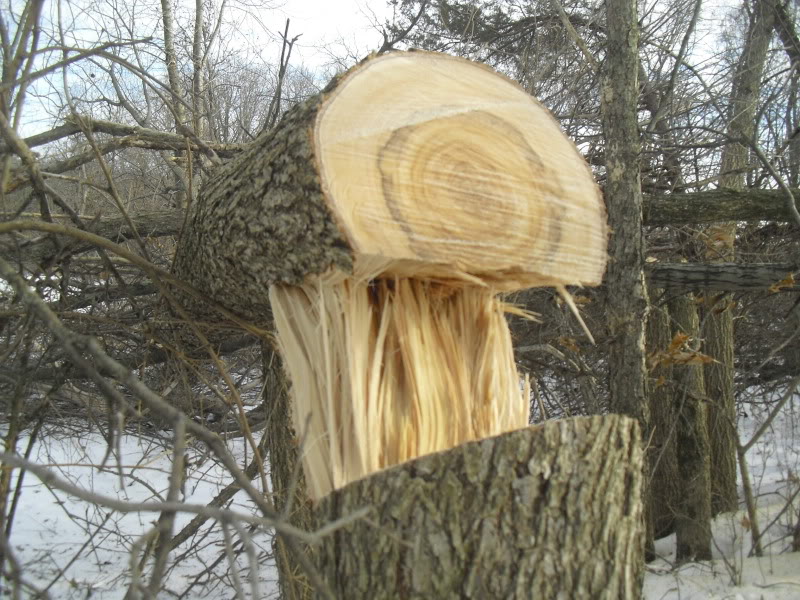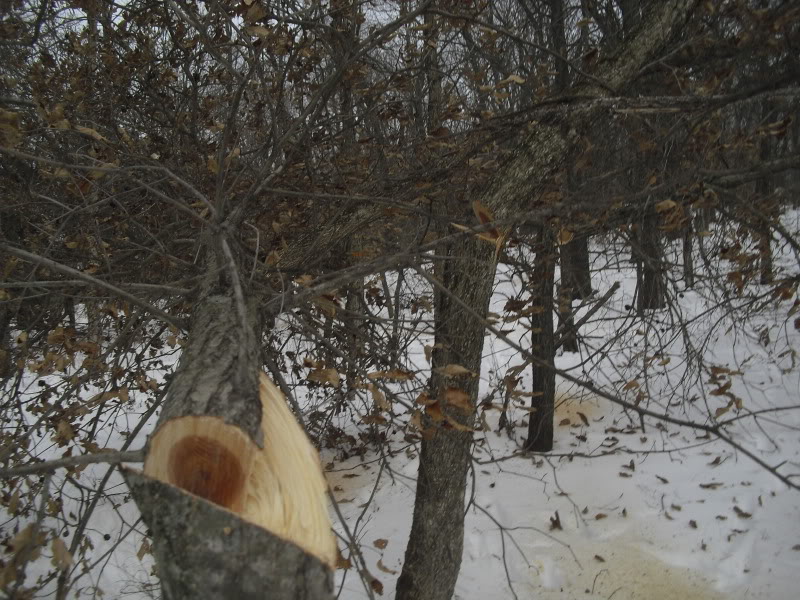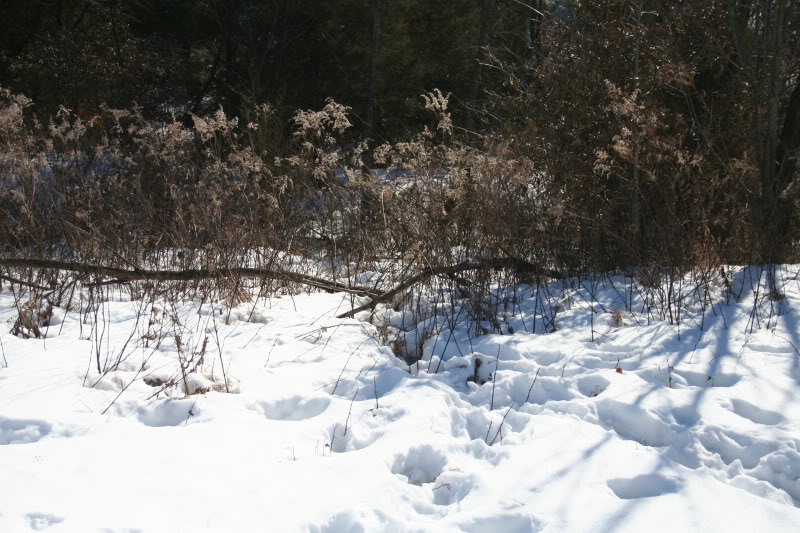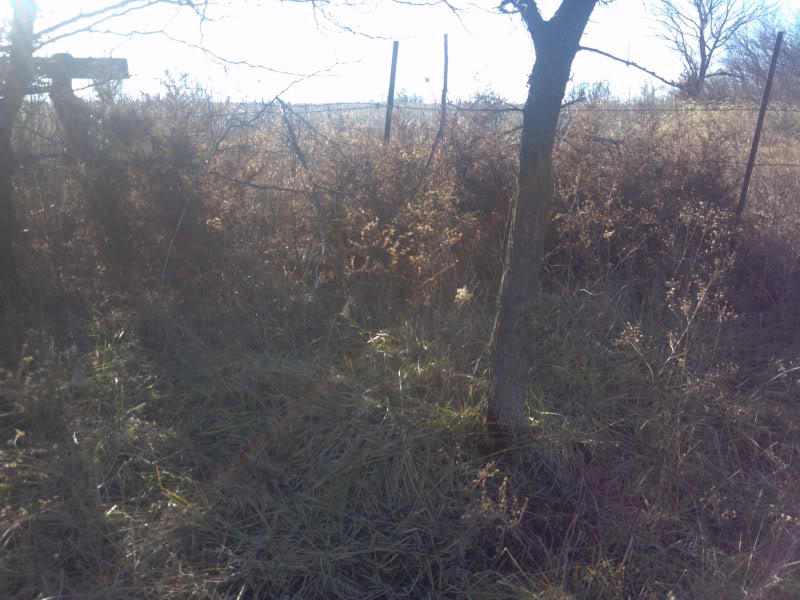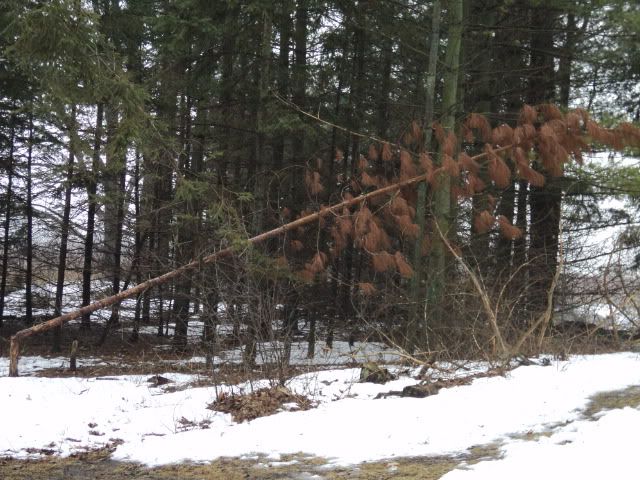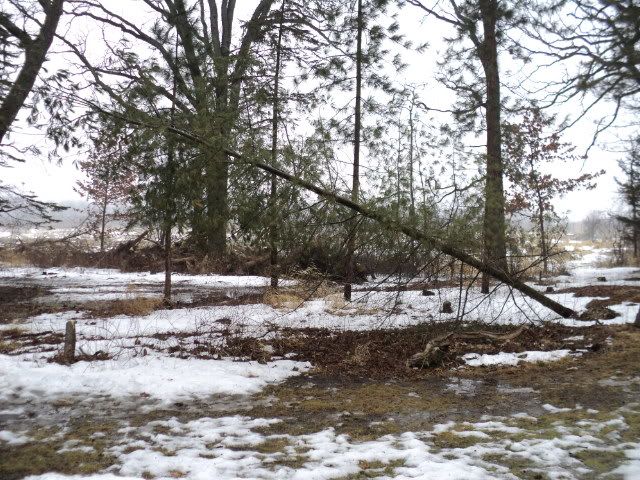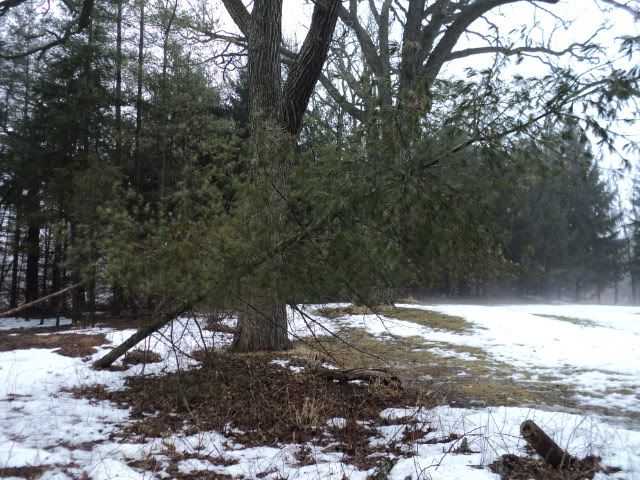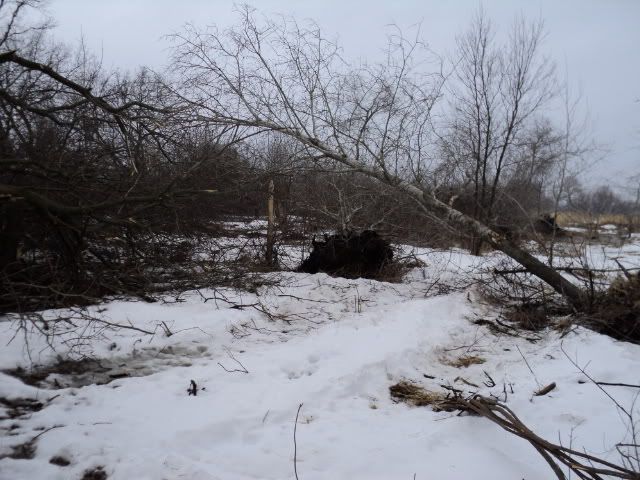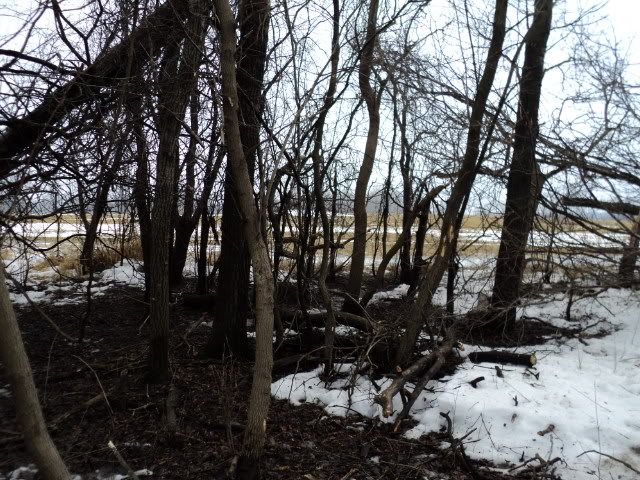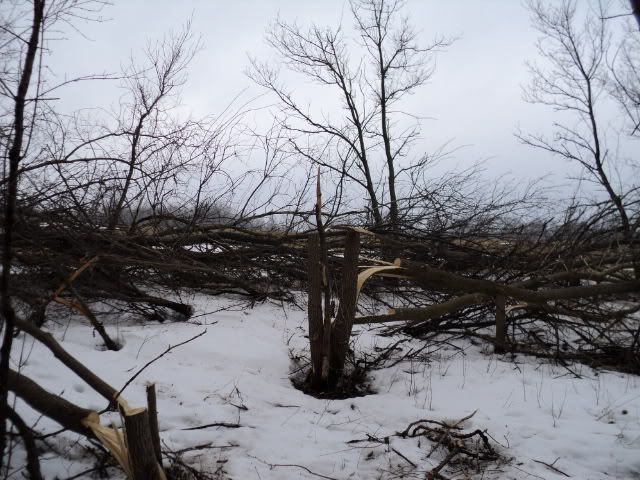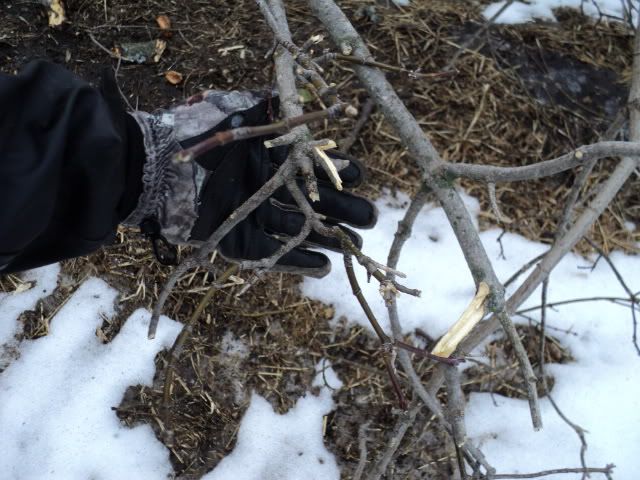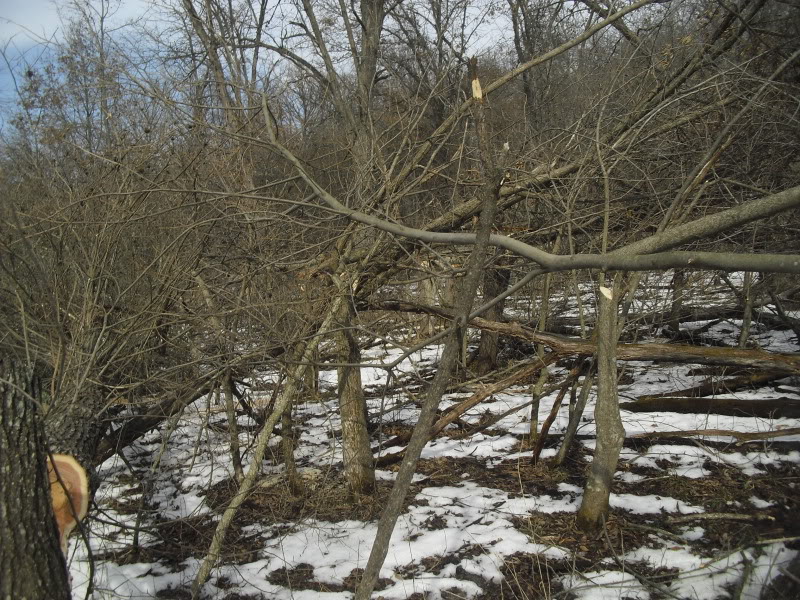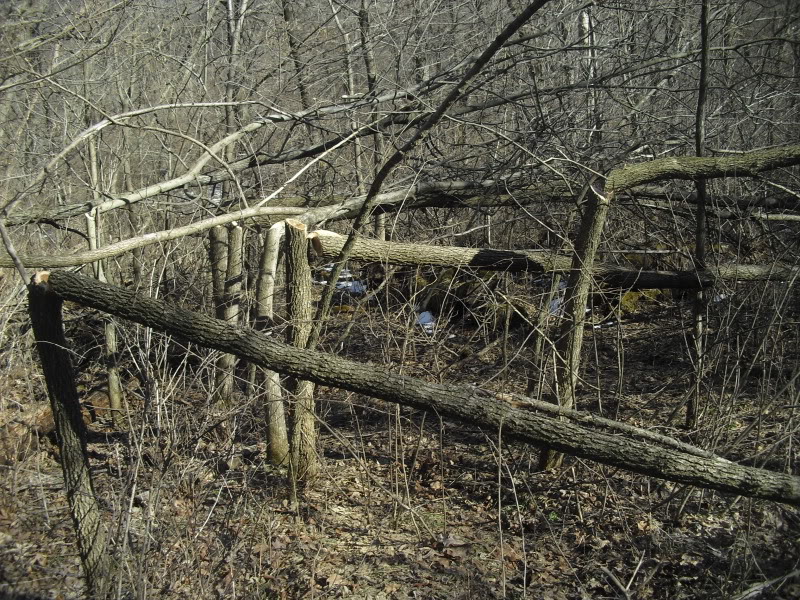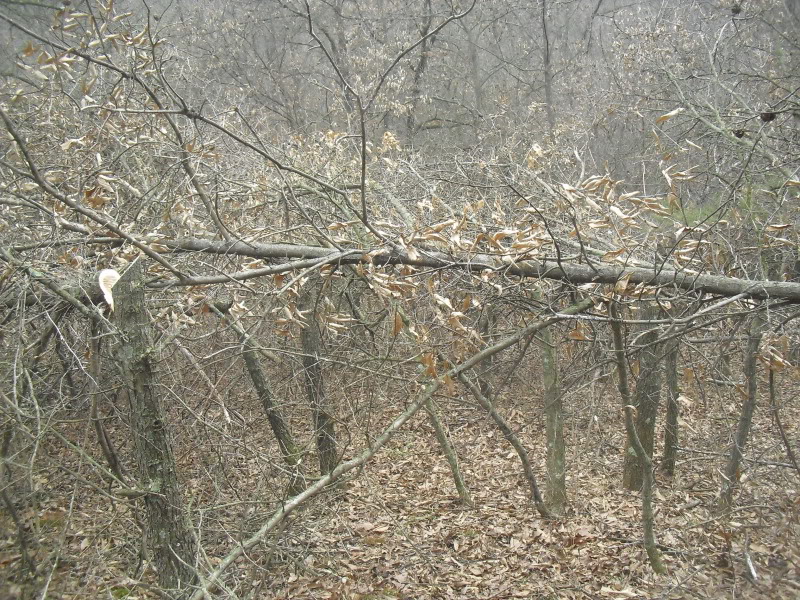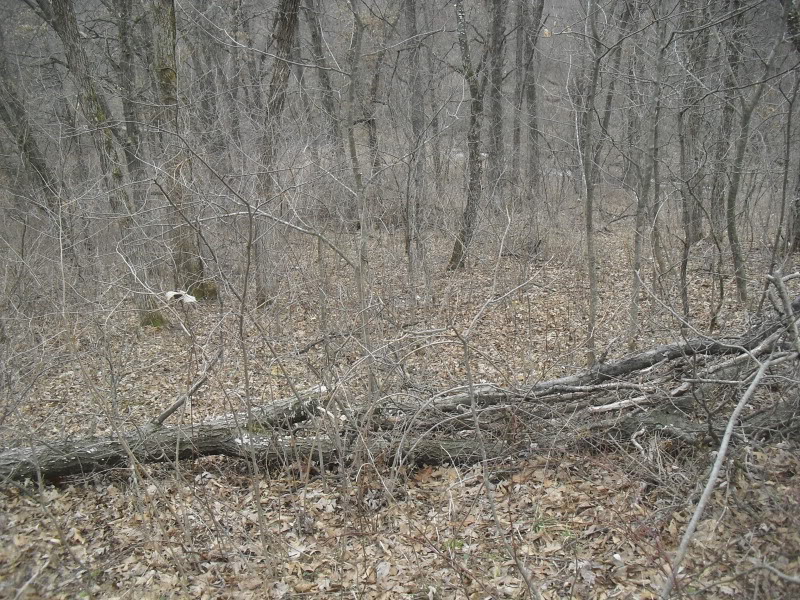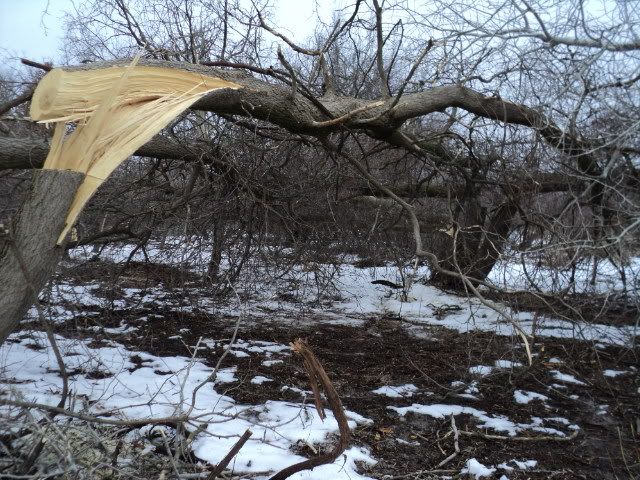dbltree
Super Moderator
On good soils with plenty of moisture, regeneration can be rapid once canopy is opened up via hinging or TSI! These little red cedars are only a year old and popped up everywhere after I hinged the area quite radically.


in 8-10 years I'll have to thin these or they will end up being way to thick

Lacking seeding trees you can easily interplant conifers into your hinged areas to vastly improve your bedding areas

Oak regeneration is also rapid where seed trees are present

In many areas I go in and hand plant oaks among downed tops

These however are all naturally regenerated seedlings that will also have to be thinned every 10 years or so
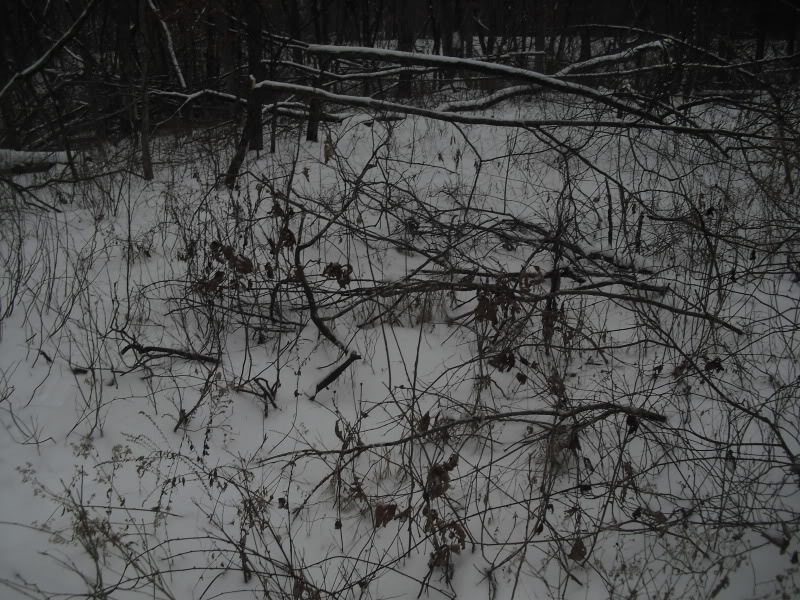
The oaks will be heavily browsed when small so they are multipurpose when small and thinning should not be done to early. Open grown oaks will have poor timber value so once again follow a foresters advice and thin at the proper stages.
You can combine a couple EQIP/WHIP practices to thin weed trees (via hinging) and then plant/tube/herbicide seedlings in the thinned areas.


in 8-10 years I'll have to thin these or they will end up being way to thick

Lacking seeding trees you can easily interplant conifers into your hinged areas to vastly improve your bedding areas

Oak regeneration is also rapid where seed trees are present

In many areas I go in and hand plant oaks among downed tops

These however are all naturally regenerated seedlings that will also have to be thinned every 10 years or so

The oaks will be heavily browsed when small so they are multipurpose when small and thinning should not be done to early. Open grown oaks will have poor timber value so once again follow a foresters advice and thin at the proper stages.
You can combine a couple EQIP/WHIP practices to thin weed trees (via hinging) and then plant/tube/herbicide seedlings in the thinned areas.
FOREST STAND IMPROVEMENT-Practice Code 666-Manual control of undesirable woody species (weed tree removal or weeding) on forest land. $113.00 per acre
TREE / SHRUB ESTABLISHMENT-Practice Code 612- Field planted to trees and shrubs for wildlife habitat
and/or timber production. $270 an acre (canopy cannot be greater then 25%)















